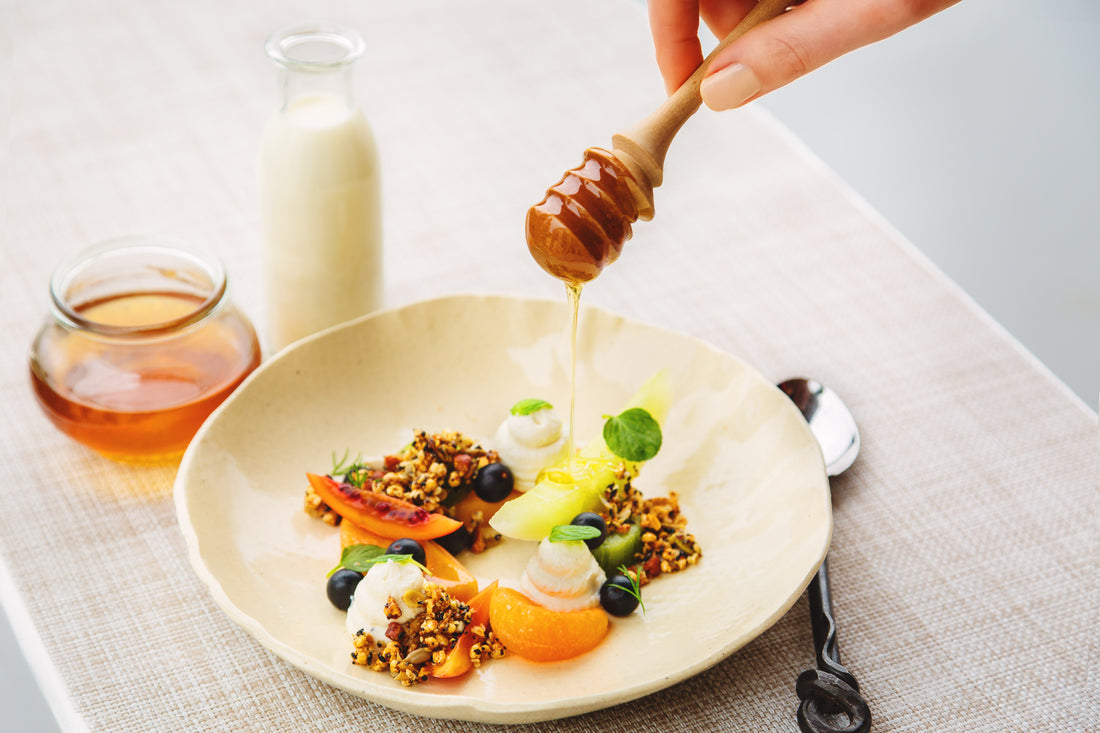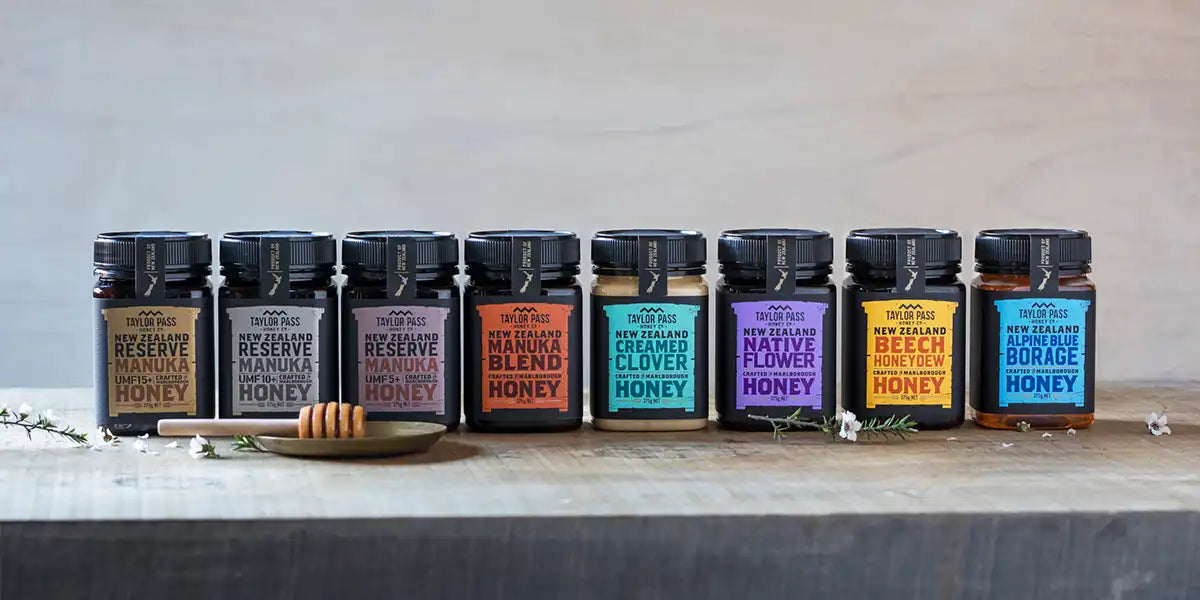Everything You Need to Know About Mānuka Honey

Everybody needs a little sweetness in their lives. Mānuka honey is mother nature’s sweetener and one of the healthiest ways to add a little natural immunity to your diet. Many experts call it a “superfood” because of all the antibacterial and antiviral nutrients Mānuka honey contains. Pure New Zealand honey is one of the richest in the world when it comes to taste and texture and is collected from self-sustaining, local lands. Read on to learn more on why Mānuka honey makes an ideal replacement for refined sugar with a side of immunity boosting power and how to decode Mānuka honey labels on shelf.
What Makes Mānuka Honey Different Than Regular Honey?
Mānuka honey is different from other forms of honey for many reasons. One of the main reasons is that it contains active ingredients. There is a strict laboratory testing requirement for Mānuka honey. First, they identify whether it is monofloral or multifloral Mānuka honey. Then, they check its activity level, also known as Methylglyoxal, or MGO. The higher the number, the more potent it is.
In addition to this, there is an independent accreditation called UMF, the Unique Mānuka Factor, which guarantees that the Mānuka honey in the jar has met the highest standards, which is important, when you consider the cost of Mānuka .
The UMF numbers (5+, 10+ and 15+) demonstrate the overall potency when it comes to its antibacterial qualities. The higher the UMF grade, the more potent the Mānuka honey in terms of nutrients. All Taylor Pass Manuka Honey, we recommend our Mānuka UMF 5+, for daily use. The UMF 10+ is ideal when looking for something stronger, whilst the UMF 15+ is the go to when feeling unwell or wanting the most active option.
To make sure you’re purchasing a genuine, tested New Zealand Mānuka honey, the jar should disclose a MGO rating at the very least and ideally, also a UMF grading. If this is missing from the label, it is difficult to compare with other products on shelf.

Monofloral vs. Multifloral Honey
When you’re reading the different Mānuka honey labels on shelves at the stores or online, you’ll notice quite a variance in pricing and might find yourself wondering - why is this one half the size but twice the price? Often, this has to do with the classification of the Mānuka honey - Be sure to check the label to see if it is Monofloral or Multifloral Mānuka.
Monofloral means that the honey comes mainly from one nectar source. Multifloral, on the other hand, is made from the nectar of many different flowers, plants, or trees, as naturally the honey bee fly from one variety to another.
In the case of a Multifloral Mānuka, this means that whilst it does contain Mānuka honey, it also contains other types of flowers. Monofloral Mānuka honey, on the other hand, contains mainly Mānuka and this is why it is more expensive. It represents a purer form or Mānuka honey with the recognised associated health benefits.
Health Benefits of Mānuka Honey
Mānuka honey has many antibacterial properties that experts believe makes it more nutritionally sound than other traditional forms of honey. It also has an abundance of antiviral and antioxidant properties as well. Some Mānuka honey health benefits include:
- Helps wounds heal faster
- Soothes sore throats and irritation
- Promotes good oral health
- Improves overall digestion
- Helps prevent ulcers in the stomach
- Boosts the immune system
- Treats and soothes acne outbreaks
- Supports upper respiratory conditions
- Helps boost the immune system
The different properties associated with Mānuka honey make it a great choice for children (over 1) and adults alike. It can be enjoyed in a recipe, to sweeten your tea or other beverages or just straight from the spoon to add extra nutrients to your diet, including antibacterial, antiviral, and antioxidant properties, which we can always use more of, and now more than ever!
Many Different Uses for Mānuka Honey
Mānuka honey is very unique and its flavor and texture are just the beginning. While most local honey can be full of vitamins, minerals, and other healthy nutrients, Mānuka honey contains a little something extra, which is Methylglyoxal. It is the active ingredient that provides Mānuka honey's antibacterial properties. Mānuka honey can be used in recipes as a sugar replacement but it’s believed that active Mānuka honey (UMF5+, 10+ or 15+) is at its most effective at room temperature or dissolved in warm, not boiling liquids. Because it is not pasteurized like some other types of honey, it brings all of its nutrients to your dish or table.
Whether you incorporate Mānuka honey into your favorite recipes, add to your smoothie or start ingesting a spoonful a day, you will reap the rewards it has to offer. Mānuka honey is becoming increasingly popular as an addition to skincare routine with its well recognised skin healing properties. Although it's not safe for an infant due to the lack of proper digestive enzymes, Mānuka honey can be safely given to children over the ages of 2 or 3. A small amount every day can boost their immune system.
Taylor Pass Mānuka Honey UMF 5+ and UMF 10+ are now available in-store at all Sprouts Farmers Market locations. If you have any other questions surrounding Mānuka, send us a message on Facebook or Instagram so we can help!





